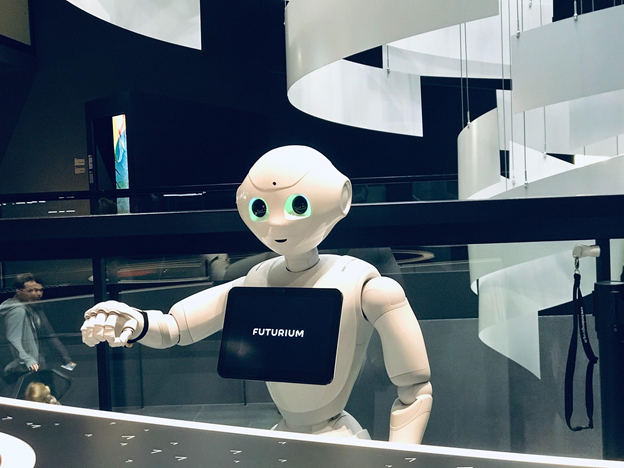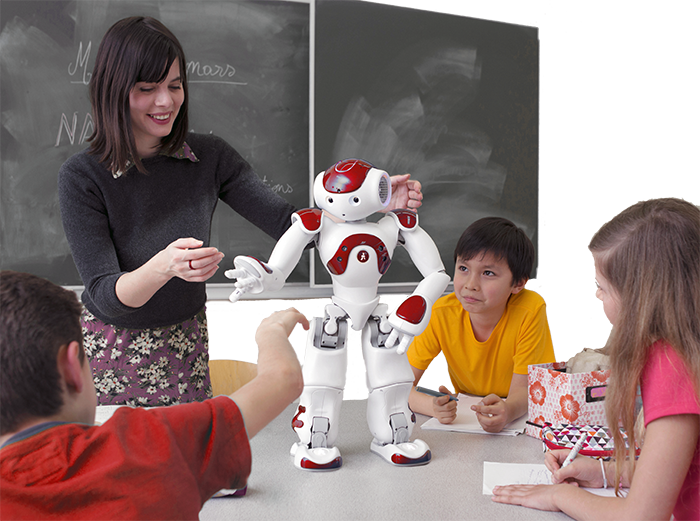By Amanda Dudley
 Photo by Fitore Fazliu on Unsplash
Photo by Fitore Fazliu on Unsplash
As a teacher, what would you give to have a few extra hours in your workweek for yourself? A few extra hours during which you can put your feet up and complete that novel you've been working on for months.
This sounds like a dream that may never come true unless you discover a magical lamp with a genie trapped inside it. Nevertheless, thanks to technology, this dream is gradually coming to life.
In today's world, educational robots are a phenomenon that's rapidly infiltrating the educational system. More and more teachers are integrating robotics into STEM classes and even art lessons, making the learning process more seamless and fun.
However, this educational revolution offers other benefits for overworked teachers. Recent studies have shown that robotics in education can help teachers save time, and we'll show you how in a bit.
How Can Educational Robots be Used in the Classroom?
In 2016, a group of Dutch-speaking kids came into the classroom eager to meet their new teacher. However, instead of meeting a grinning, bespectacled teacher, they met something utterly different from what their infant minds had imagined. They met a friendly 23-inch tall humanoid robot called Robin. Robin led them through a series of fun language learning activities that offered them the best of both worlds: entertainment and education.
Robin is just one out of the many examples of how robots can be used in the classroom. There are several other ways through which robots can be used for educational purposes too.
Robots can equally teach students how to write essays instead of hiring an essay writing service. Similarly, these bots can be used for social teaching in classrooms as well. For instance, schools have begun to test Elias, a social teaching robot, for math and language learning in Tampere. This robot has also been programmed to dance and teach students how to dance to integrate fun into the learning process.
How Educational Robotics Can Free Teachers’ Time For Creative Work
As a teacher, it can be hard to find time for creative activities in between teaching and grading papers. Earlier on, we mentioned that robot teachers can help save teachers time. But how can they do this exactly?
Robots will automate tasks and help teachers prioritize the most important ones
Teachers are often overwhelmed by time-consuming tasks that aren't necessarily student-centric. For instance, the average teacher spends a significant period of time each day making copies, taking attendance, and doing several other administrative tasks that don't have anything to do with the learning process. At the end of the day, they'll be stuck with very little time for creative activities or tasks.
Fortunately, robots teacher can help to automate the most time-consuming tasks. This way, teachers can focus on the most important ones (e.g., actual teaching or grading scripts) and still get a few extra hours for themselves.
Robots can help with lesson planning
A large percentage of teachers have admitted that creating a lesson plan is the task they love to hate. While a lesson plan can make teaching significantly less stressful, the process of drafting one is time-consuming and headache-inducing. Teachers may still have to spend time going over their lesson plans, making adjustments, or grading student papers at home.
However, educational robots can take this arduous task off teachers' hands, giving them time to focus on more fun, creative activities.
What Limitations Do Educational Robots Have?
Inasmuch as educational robots and robotics classes can make the teaching profession more seamless, they have quite a few drawbacks.
For starters, educational robots tend to take a one-size-fits-all approach towards teaching. However, teachers have to make concessions and adjustments according to students' individual differences to ensure that every student gets carried along. For instance, when teaching students with special needs, a teacher must make several adjustments to the lesson plan and teaching process. Therefore, it's hardly advisable to outsource the actual teaching work to robots.
In the same vein, robot teachers are pretty limited when it comes to grading papers and assignments. While they can easily grade mathematical papers, they can't give quality output and feedback when it comes to writing assignments because this process is a conversational, personal art that they don't entirely understand. Sure, robots and artificial intelligence can spot grammatical or syntax errors in writing assignments, but their feedback would be quantitative rather than qualitative.
Final Thoughts
Many teachers struggle with juggling classroom work and personal creative activities at the same time. Fortunately, educational robots can help automate some administrative classroom tasks, thereby freeing up time for teachers. From all indications, we're facing an educational revolution that will change everything we've known about classroom teaching.
Learn more about Educational Robotis with RobotLAB Inc

About the Author
 Amanda Dudley is a lecturer and a writer with a Ph.D. from Stanford University. She loves teaching, studying, and helping children with disabilities learn. When she isn’t doing any of that, she works at EssayUSA providing stellar essay writing services for clients.
Amanda Dudley is a lecturer and a writer with a Ph.D. from Stanford University. She loves teaching, studying, and helping children with disabilities learn. When she isn’t doing any of that, she works at EssayUSA providing stellar essay writing services for clients.


